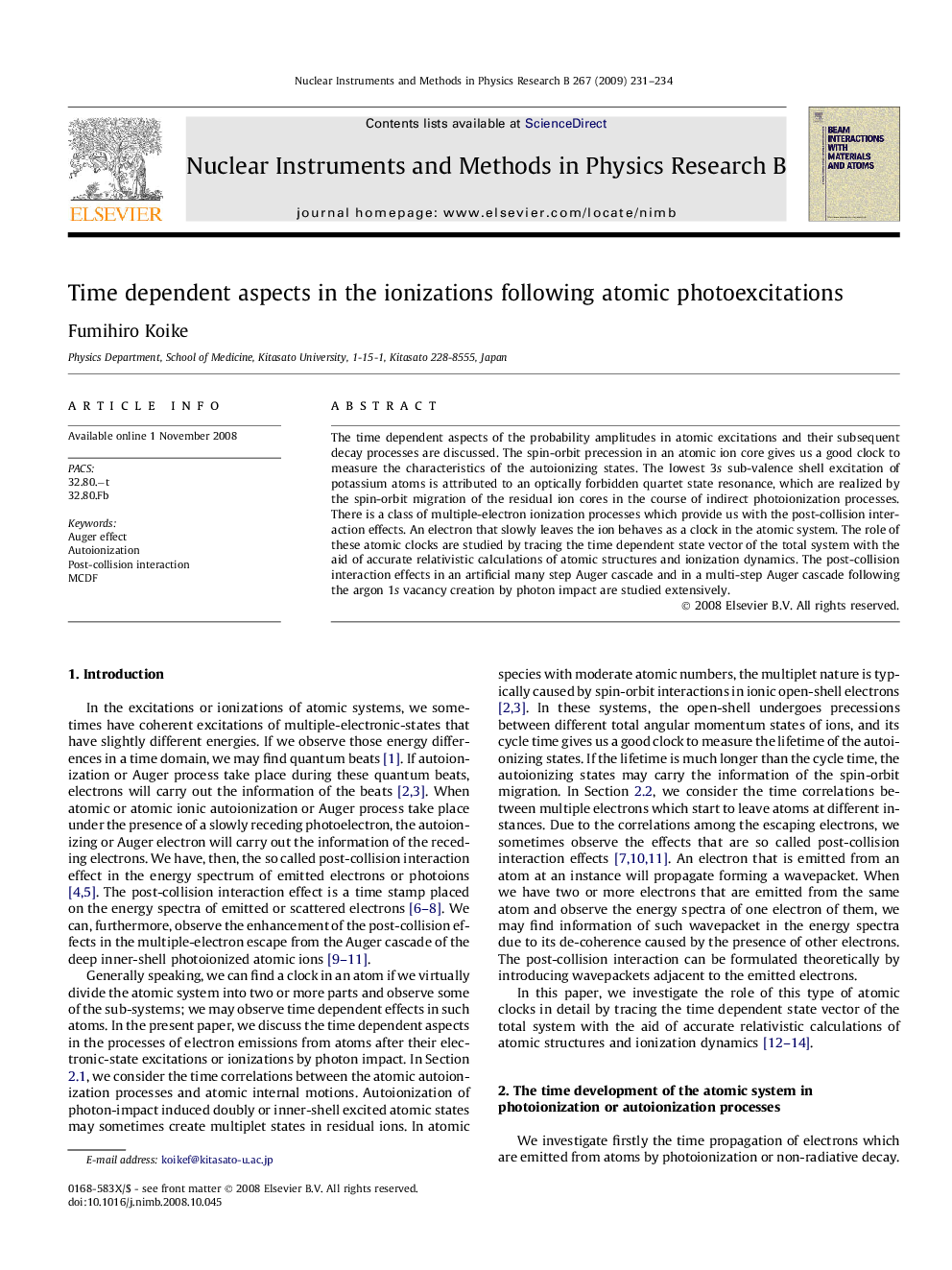| Article ID | Journal | Published Year | Pages | File Type |
|---|---|---|---|---|
| 1682696 | Nuclear Instruments and Methods in Physics Research Section B: Beam Interactions with Materials and Atoms | 2009 | 4 Pages |
The time dependent aspects of the probability amplitudes in atomic excitations and their subsequent decay processes are discussed. The spin-orbit precession in an atomic ion core gives us a good clock to measure the characteristics of the autoionizing states. The lowest 3s sub-valence shell excitation of potassium atoms is attributed to an optically forbidden quartet state resonance, which are realized by the spin-orbit migration of the residual ion cores in the course of indirect photoionization processes. There is a class of multiple-electron ionization processes which provide us with the post-collision interaction effects. An electron that slowly leaves the ion behaves as a clock in the atomic system. The role of these atomic clocks are studied by tracing the time dependent state vector of the total system with the aid of accurate relativistic calculations of atomic structures and ionization dynamics. The post-collision interaction effects in an artificial many step Auger cascade and in a multi-step Auger cascade following the argon 1s vacancy creation by photon impact are studied extensively.
